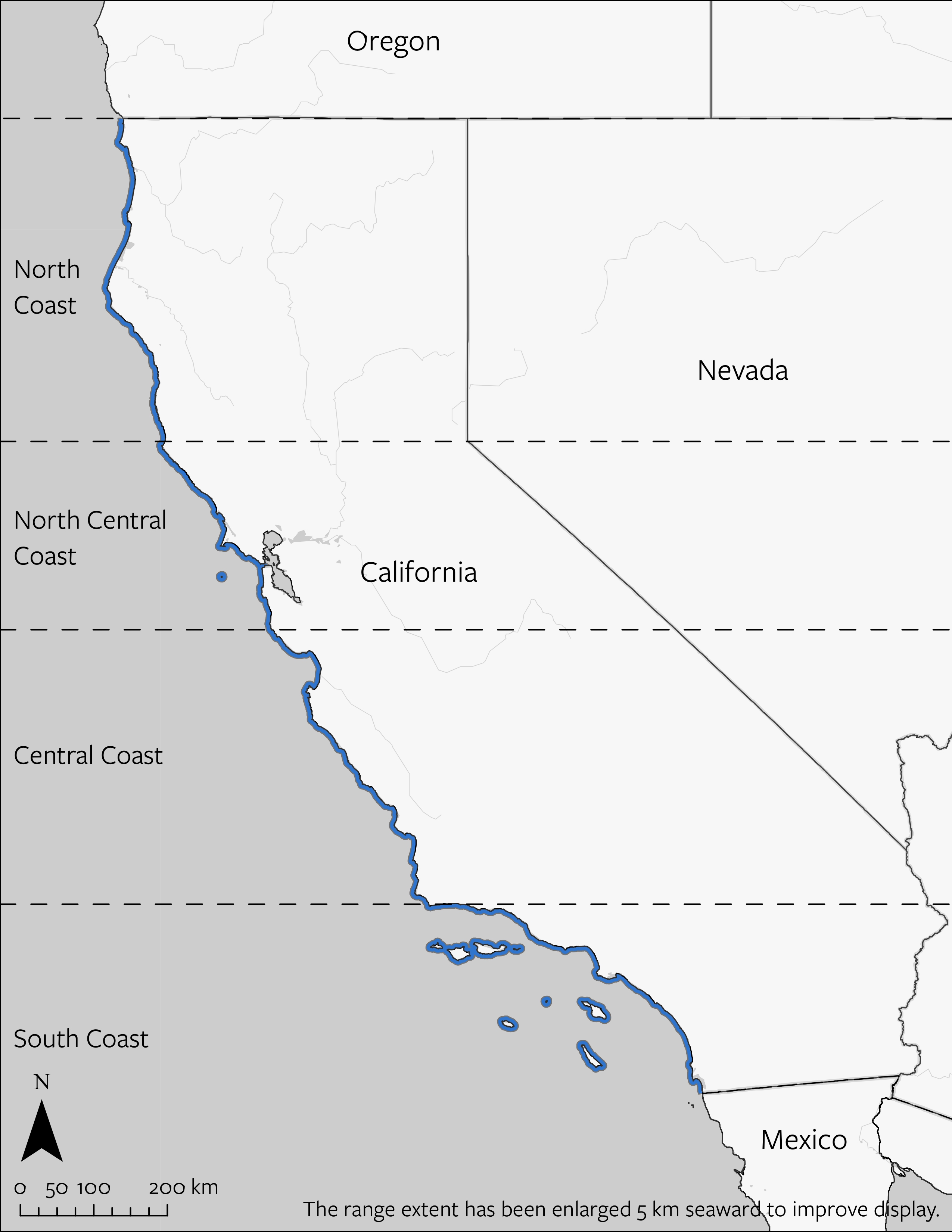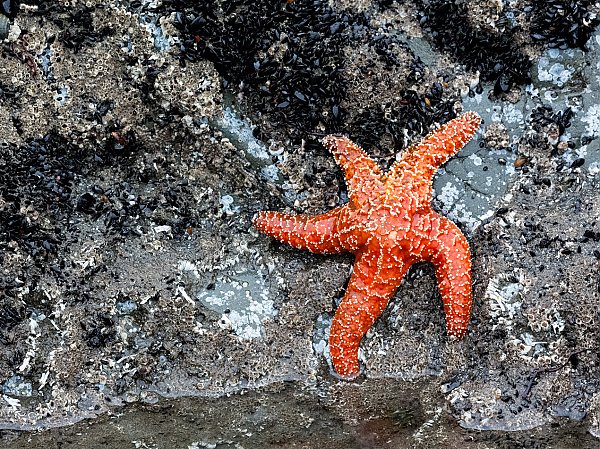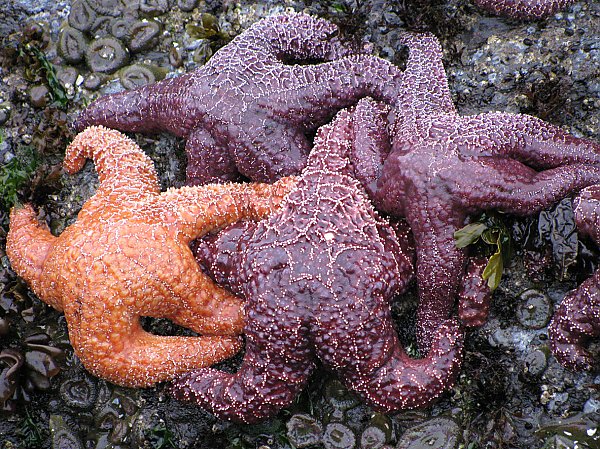Ochre Sea Star
Pisaster ochraceus
Ochre Sea Star
Pisaster ochraceus
Ochre sea stars are a keystone predator that was ravaged by a wasting disease that caused up to 99% mortality in some locales. The numbers at the top of each bar represent the number of sites surveyed.
Morphology
Ochre sea stars typically have five stout arms radiating from a central disk, with a diameter ranging from 10 to 25 centimeters. The arms are equipped with tube feet that have suckers, allowing the sea star to cling tightly to rocky substrates and resist being washed away by waves. These tube feet operate through a hydraulic water-vascular system, allowing the sea star to attach to surfaces and move across the rocky intertidal. Ochre sea stars can alter their body shape in response to varying wave exposures. Sea stars on exposed shores often develop higher aspect ratios (slender arms), which reduces the risk of dislodgement by waves. This morphological plasticity allows them to adapt to changing environmental conditions. The surface of the ochre sea star is rough, covered with small spines. These spines provide protection and are part of the sea star’s unique appearance. Ochre sea stars exhibit a variety of colors, including purple, orange, yellow, reddish, and brown.
Habitat and Range
Ochre sea stars are found on the rocky intertidal shores of the Pacific coast, ranging from Alaska to California. They inhabit the middle to low intertidal zones and can also be found subtidally on rocks down to depths of 90 meters.
Range Map

Reproductive Biology and Life History
The ochre sea star reproduces through broadcast spawning, whereby females release eggs and males release sperm into the water column. During the breeding season, the gonads of ochre sea stars can grow significantly, comprising up to 40% of the sea star’s body weight. A single female can produce up to 40 million eggs during a breeding season, which typically occurs between May and July. The fertilized eggs develop into free-swimming larvae that go through several stages, before settling down and metamorphosing into juvenile sea stars. They can live up to 20 years.
Ecology
The ochre sea star is common on rocky intertidal shores of western North America and preys on many other species, including mussels. They consume mussels by prying open the shells with their tube feet and then everting their stomachs to release digestive enzymes that liquefy the prey’s tissues. The digestion process can take two to three days. Ochre sea stars are known to aggregate, often responding to chemical cues from conspecifics that have successfully foraged. Predators of sea stars include crabs, other sea stars, and gulls.
Cultural and historical context
The ochre sea star is the species for which the concept “keystone species” was invented. When the ecologist R.T. Paine performed an experiment in the 1960s where he removed ochre sea stars from rocks and tidepools in Washington State, he found that mussels took over the intertidal, squeezing out other species as a result of no longer being eaten by sea stars. Because of this effect, the sea stars were given the name “keystone species”. The concept has been found to apply to many other top predators such as sea otters, wolves, and killer whales (orcas).
Date modified: January 2025
This animal can be found at the Aquarium of the Pacific
Primary ThreatsPrimary Threats Conditions
Threats and Conservation Status
Ochre sea stars were a common component of west coast rocky intertidal habitats until sea star wasting disease appeared in 2013. Averaging across all sites and regions, trend analysis indicates an 8.2% annual decline, which explains 60% of the year-to-year variation in abundance. The ubiquitous impact of this disease can be seen in regional analyses as well – with all four of California’s coastal regions showing a collapse in ochre sea star numbers between 2013 and 2014.
Wasting disease causes sea stars to develop lesions and experience tissue decay, which has led to as much as 99% mortality in some locations. That rate of mortality represents an extremely strong selection pressure, and there is some evidence that survivors of this disease are genetically distinct. Long-term monitoring data suggest that sea star populations have started to rebound in some regions, but this trend is not universal.
Some biologists have hypothesized a link between a warming ocean and disease outbreaks in marine organisms, but such a link has yet to be confirmed for sea stars and wasting disease. Human activities, such as collecting sea stars and disturbing their habitats, pose additional threats to sea stars. Responsible tourism and educational initiatives are necessary to minimize negative impacts from human interaction.
Population Plots






Data Source: The data were obtained from the rocky intertidal sampling locations that are part of the MARINe Network (see https://marine.ucsc.edu/). The MARINe website describes the sampling protocol.



